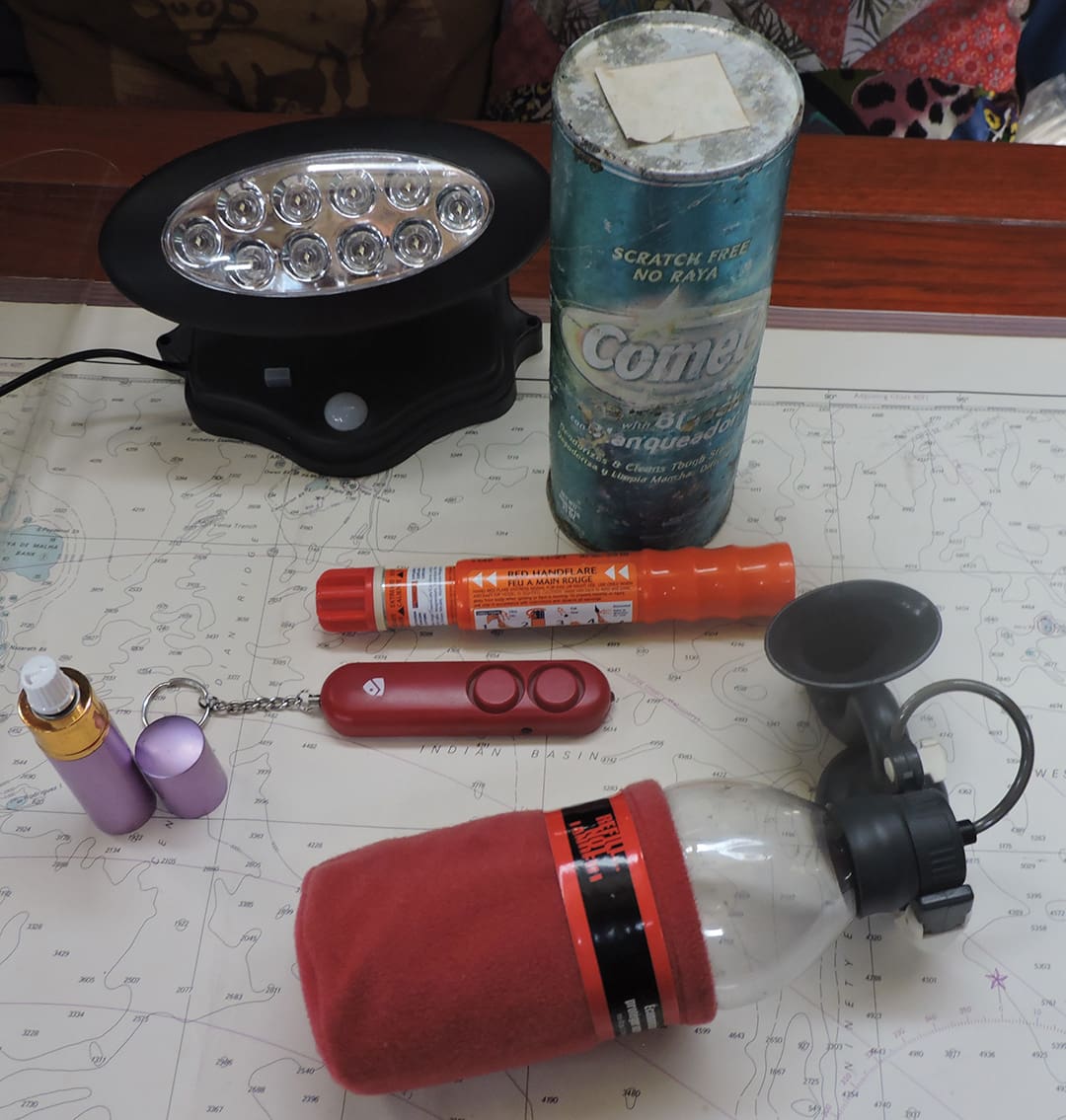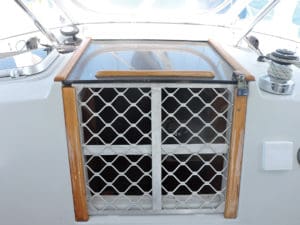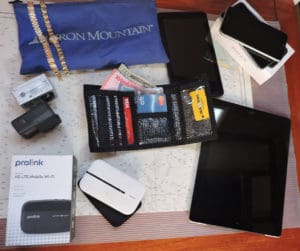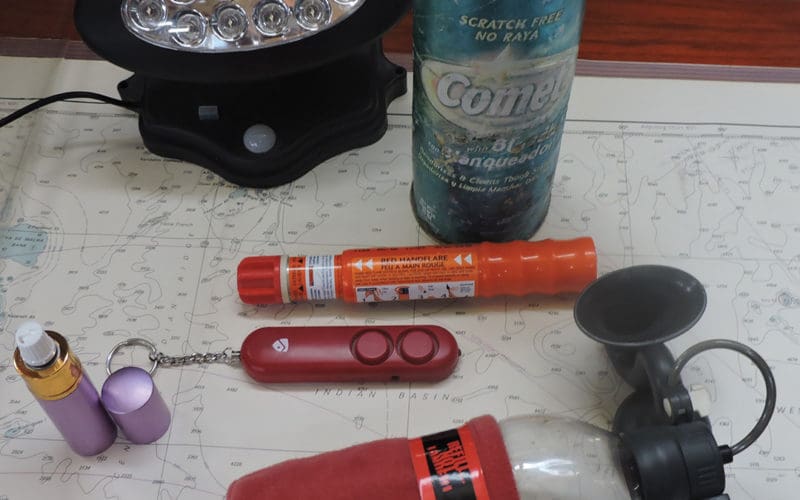
I didn’t start our circumnavigation with much in the way of pirate protections. During our five years of cruising, however, I picked up on other people’s first-hand stories and the items that facilitated a “home grown” pirate prevention plan based on our location in the world.
These are a few ideas I incorporated to help keep us safe in pirate territories or in our own backyard. Before we left Miami I went to the local head shop and found a false-bottomed Comet cleanser container to store cash and small valuables. There was a whole variety of these containers from cereal to detergent boxes that are a handy way to conceal valuables in plain sight.
A few other items I stumbled across and collected as I went were a small hand-held high-pitched alarm, small hand-held flares, a horn and an inexpensive motion detection light that we use at anchor. I also found a small steel locking safe disguised as a cookbook. This comes in handy during lightning storms as it is big enough to lock away several phones and e-readers, in theory to protect electronic devices per the Faraday cage principle.
When we arrived in New Zealand we were asked if we had mace onboard. I had completely forgotten that my teenage daughter had a small container of mace disguised as perfume. The official in New Zealand said she was supposed to confiscate it; however, she said “If we stowed it away” during our visit she would allow us to keep it.
Before we set sail for Indonesia I found a CCTV sign that I can temporarily post on the side of the boat. For me this is peace of mind in a remote anchorage. If an opportunist is looking for a boat to steal from, this might give them pause.

We also had two locking aluminium hatch gates made before going to Indonesia; one for the companionway and another for the front hatch, so that we can feel secure and still have airflow. We used these security gates for the first time in Tanzania, after being warned of fishermen boarding boats at night.
An interesting story told by a captain who chartered a schooner in Indonesia in the 80s was the time his boat was approached by thieves underway. There were only three crew on board so they took turns going below and changing their jackets and hats and popping back on deck. It gave the appearance of many more people on board and was enough to dissuade the thieves.

Another idea I picked up from a mate who experienced a boarding and attack in Brazil is to keep a stash of fake wallets, phones, iPads and cameras around so robbers get only your broken electronics. Just recently a boat was boarded and robbed in Indonesia and according to the Cruising SE Asia Facebook page, the pirates got only fake wallets with a bit of cash.
We are currently cruising from the Seychelles to Tanzania, which was known as Somalia pirate territory before armed patrols in the area began. We made sure to register with the Maritime Security Centre – Horn of Africa (MSCHOA), and have an emergency contact number for a department that monitors US-flagged vessels in the area. Making a solid sail plan is always prudent, and vital when cruising areas with piracy threats.
Another common-sense initiative when anchoring in remote areas is to simply make the acquaintance of the locals on shore. Introduce yourself, say hello and make some friends. In Indonesia where secure dinghy docks are rare, we sometimes asked a local to watch our dinghy while we went ashore, and paid him $3 to $5 per day. We also have an embarrassingly large chain that we lock our dinghy up with, the theory being that it will be a larger deterrent compared to the other dinghies that are not so well safeguarded. We don’t have our boat’s name on the dinghy because this would just be notifying everyone that we aren’t on board our boat. We always hoist the dinghy at night; this is for safety as well as to protect the dinghy’s hull from marine growth.
Indonesia had a bad reputation for a while but, I think that was due largely to cruisers’ misperceptions. We often had fishermen covered in dark hoodies and full face coverings approach our boat. At first this was alarming but we soon realized they were simply curious or perhaps wanted a Coke. The face coverings are to protect them from the relentless sun.
On a side note: Cyber security is just as important as physical security. Be sure to safely secure all those hand-written passwords that, if fallen into the wrong hands, could cause a boatload of trouble.
In our travels we have met the kindest and friendliest people. These measures are just a few ideas I collected along the way for peace of mind while always being optimistic that human decency will prevail. But caution is still warranted. We on our sailboats look like millionaires to some people, and there might be some who see us as an opportunity. Sailing has its hazards but we still do it. Protecting yourself from external threats should follow that same spirit.
Susan Konig sails with her husband aboard their 51-foot Beneteau Idylle, Shenemere. They are currently in Tanzania preparing to sail the SE coast of Africa to Cape Town. Follow her blog: SailingShenemere.com

